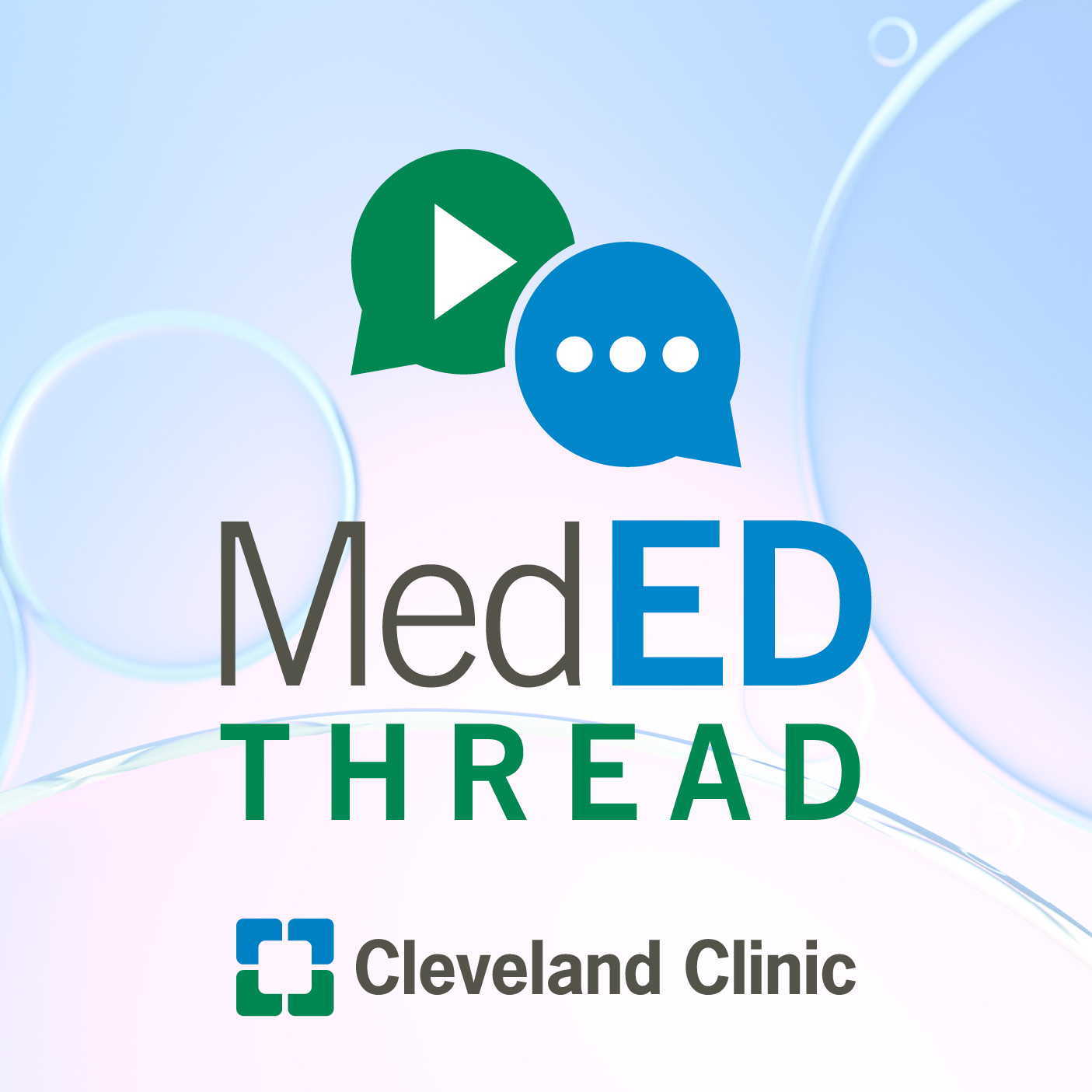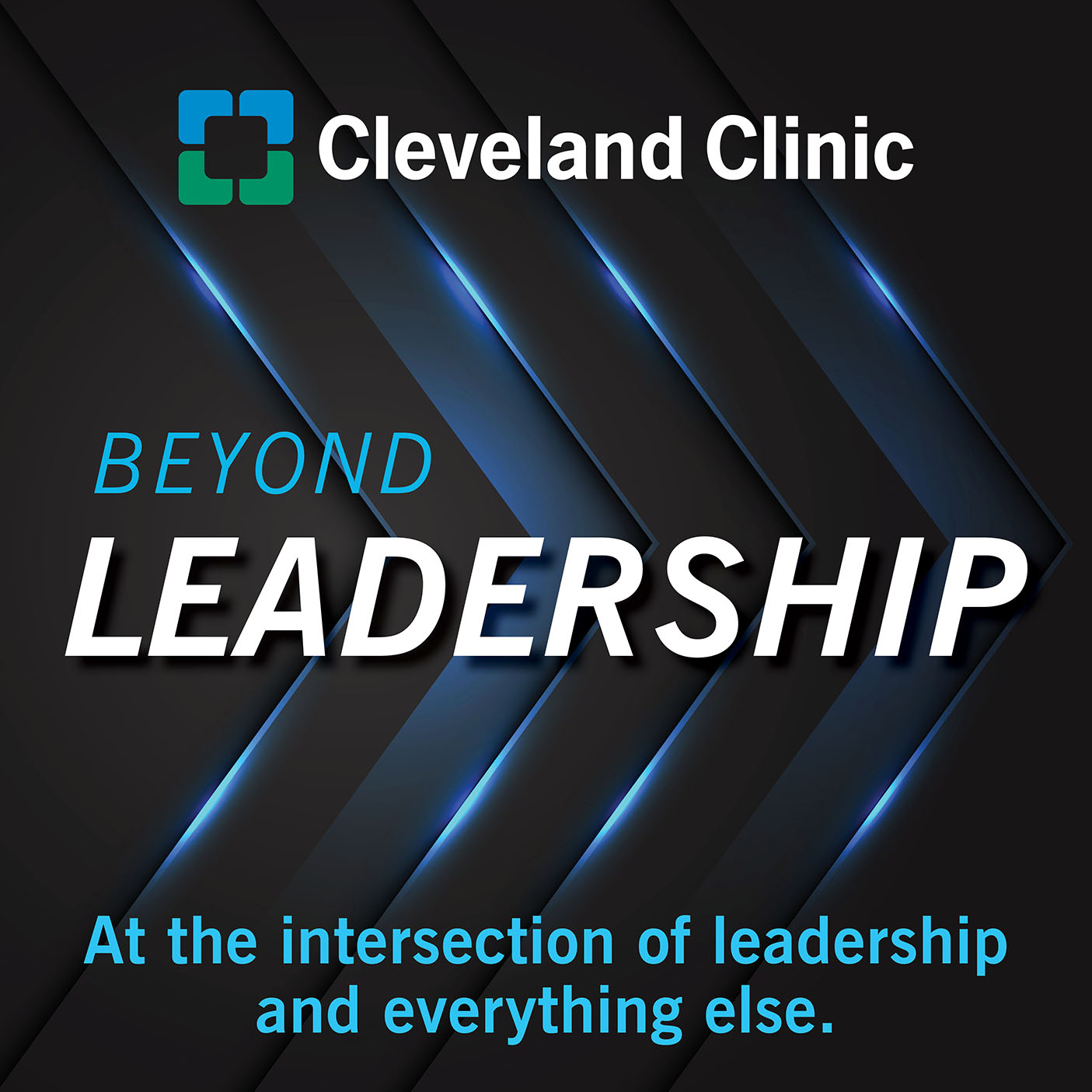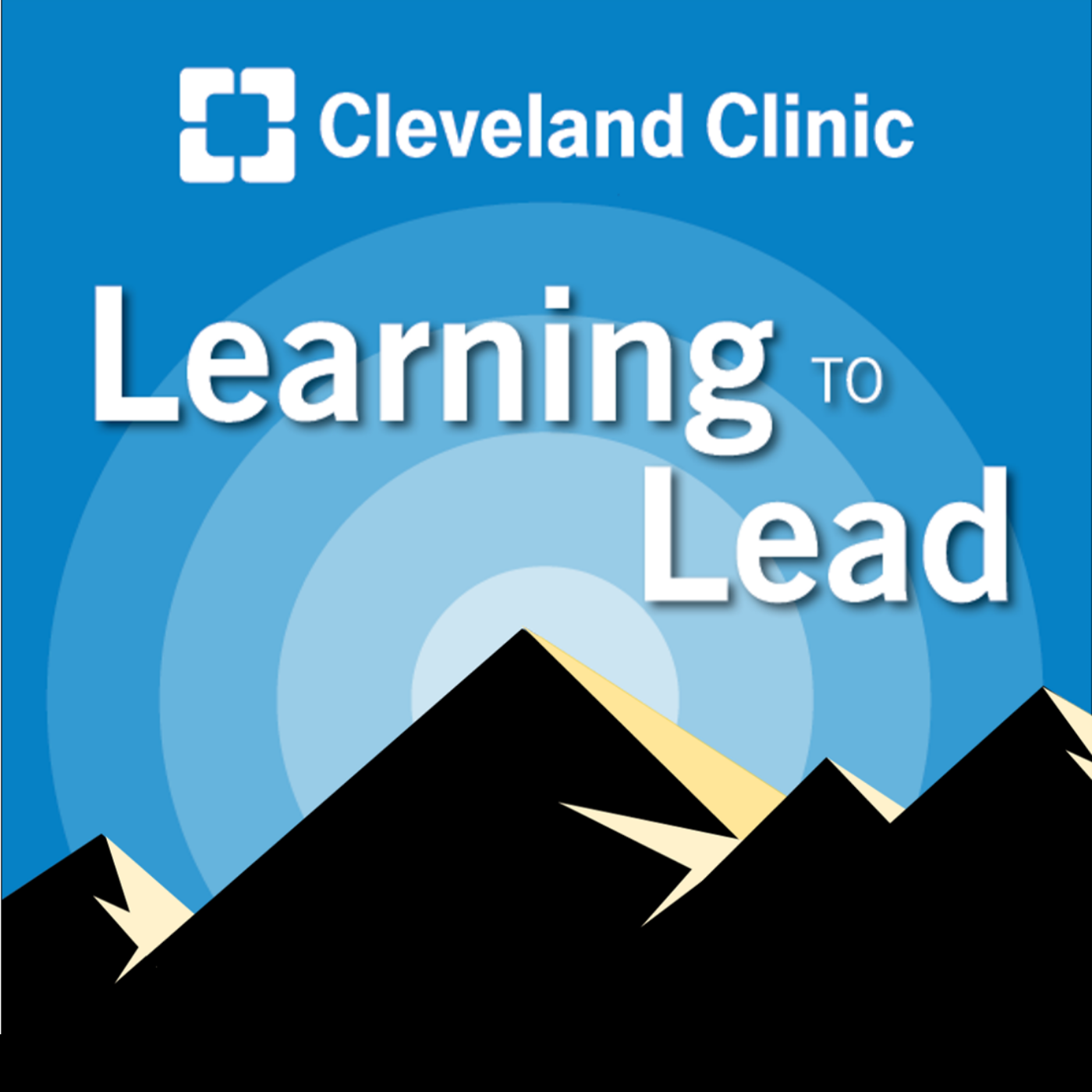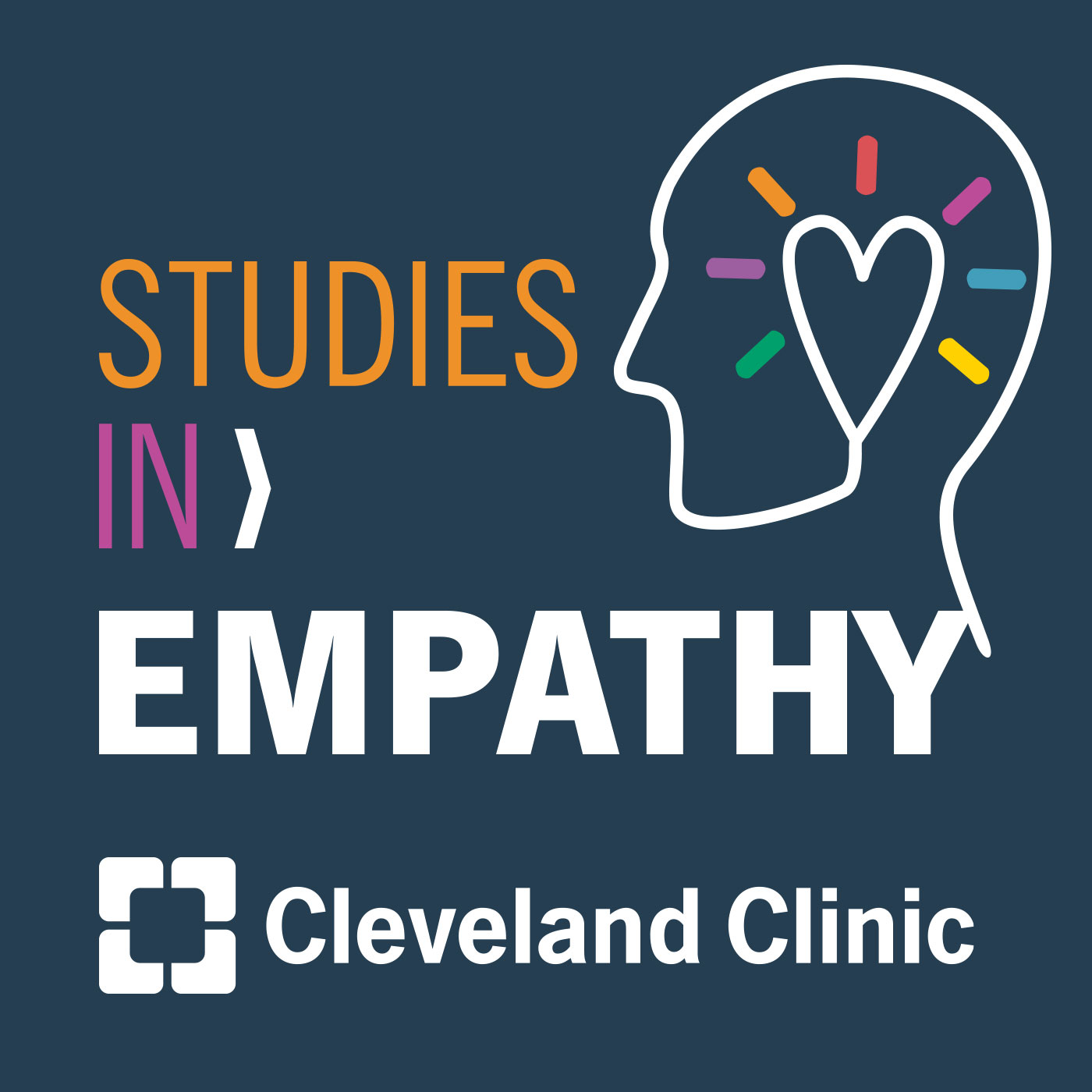How Donating Your Body to Medicine Leaves a Lasting Legacy (Part 1)

In this episode, we talk with Dr. William Albabish, Director of Anatomy at Cleveland Clinic Lerner College of Medicine, who explains the crucial role of the Cleveland Clinic Body Donation Program for teaching human anatomy and shaping surgical training. Dr. Albabish shares personal anecdotes and dispels common misconceptions about body donation, emphasizing the importance of body donations to medical education and the lasting legacy donors leave behind.
Subscribe: Apple Podcasts | Spotify | Buzzsprout
How Donating Your Body to Medicine Leaves a Lasting Legacy (Part 1)
Podcast Transcript
Dr. James K. Stoller:
Hello, and welcome to MedEd Thread, a Cleveland Clinic Education Institute podcast that explores the latest innovations in medical education and amplifies the tremendous work of our educators across the enterprise.
Dr. Tony Tizzano:
Hello. Welcome to today's episode of MedEd Thread, an Education Institute podcast exploring Cleveland Clinic's Body Donation Program. I'm your host, Dr. Tony Tizzano, Director of Student and Learner Health here at Cleveland Clinic in Cleveland, Ohio.
Today, I am very pleased to have Dr. William Albabish, Assistant Professor of Surgery and Director of Anatomy at the clinic's Lerner College of Medicine of Case Western Reserve University here to join us. William, welcome to the podcast.
Dr. William Albabish:
Thank you, Tony.
Dr. Tony Tizzano:
So, to get started, William, tell us a little bit about yourself, your educational background, what brought you to Cleveland and your role here at the Cleveland Clinic.
Dr. William Albabish:
Tony, first of all, it's an absolute pleasure to be here. My journey into the world of anatomy and medical education was somewhat serendipitous. Originally, I attended the University of Guelph in Ontario, Canada, with the intention of becoming a vet because of my love for animals. However, during my undergraduate studies in kinesiology, I enrolled in an anatomy course in my third year that profoundly changed my direction.
This course, powered by body donations, opened my eyes to the intricacies of human anatomy, and the profound respect and professionalism involved in this field influenced by my mentors like Dr. Lorraine Jadesk, who later became my advisor. And Pamela [inaudible 00:01:35], our lab manager there. I found myself drawn deeper into the world of an anatomical education. This led me to pursue further research in a master's and eventually a PhD focusing on the integration of innovative technologies in anatomy education with the ultimate plan of making the most positive impact I can in this world.
And once again, serendipity struck when I met Dr. Drake, who was my academic idol as one of my first graphs in my PhD was one of his graphs with the research he's done here at Cleveland Clinic. And one thing led to the other, and here I am a few years later after teaching at various institutes in Canada, I found myself filling the shoes of a giant and hopefully continuing on his legacy.
Dr. Tony Tizzano:
Fabulous. Well, it's good to see that you took advantage of things that come your way. So, in today's segment, we'll explore Cleveland Clinic's Body Donation Program and its essential role in teaching human anatomy and related surgical considerations.
So, to get started, William, if you could help us frame the role of this critical program as it relates to our medical students, your research, and surgical training of our residents.
Dr. William Albabish:
Absolutely, Tony. The Body Donation Program is fundamental, not just to the education of our medical students, but it's also pivotal in the advancements of medical research and surgical training. Real human donors offer an unparalleled resource for learning and practice.
To give you an example here, last year alone, we had over 130 donors, which facilitated the education of more than 1,400 learners directly, and these are learners we keep track of. This ranges from students to world renowned surgeons. This hands-on experience is irreplaceable, allowing for the development of technical skills and innovative surgical techniques that could not be cultivated to the same extent through any other means. As an example, I've seen world-changing research take place in my one-year tenure over the last year here.
Dr. Tony Tizzano:
So, that's very insightful. Can you share a personal story or experience that highlights the impact of body donations on medical training?
Dr. William Albabish:
Certainly, Tony. And honestly, there are many over the years, but just in my short year here at the Cleveland Clinic, one story that I can think of, and this is more recent, was of a group investigating techniques to reposition the uterus in young females undergoing radiation treatment, aiming to preserve their ability to conceive post treatment.
The theory, while promising on paper, needed validation. And thanks to our Body Donation Program, this group was able to conduct their research and achieve astounding results within a short time frame. This kind of impact, potential life altering medical innovation is what makes each donation and each donor's contribution incredibly significant.
Dr. Tony Tizzano:
Yeah, there is so much that goes on behind the scenes to the things that occur for us in medicine, and I think you're highlighting those. So by now, I'm sure that some of our listeners might be curious. How does the process of body donations work? Can you walk us through it?
Dr. William Albabish:
Absolutely. The process is underscored by our unwavering commitment to respect and professionalism starting from the moment an individual considers donation. Our website, which is, if you go on Google, Cleveland Clinic Body Donation Program, offers comprehensive information and facilitates the sign-up process. Upon the donor's passing, their loved ones reach out to us via our dedicated hotline. We then ensure the body donor meets our health criteria before respectfully transferring them to our facilities.
After their invaluable contribution to education and research, The bodies are cremated. The remains are either returned to the families or interned at the Lakeview Cemetery, depending on the family's wishes. This entire process is handled with the utmost care, honoring the generosity of each donor and their family.
Dr. Tony Tizzano:
Yeah, I think that's excellent and it gives our listeners a website they can take a look at, but I would sense that there are often reservations, perhaps misconceptions related to body donation. What are some of the common ones that you encounter, and how do you address them?
Dr. William Albabish:
That's a very good question, Tony, and I agree with you. I've seen it firsthand. I mean, the media doesn't help often when they highlight one bad apple, I'm gonna call it, in a vast world of amazing, amazing medical world work that's being done.
And so, the biggest concern I see is respect and professionalism. What happens to my body after I donate it to medical education? And this is where I can assure you, at the very least here at Cleveland Clinic, respect starts from the first day.
The second our students or our learners entered our lab, we take them to the classroom and we talk to them about what a unique experience this is going to be. The respect and professionalism is highlighted and it's stressed out that this is the ultimate gift someone can make, donating their body for medical education.
And so, the respect and professionalism, which is engraved in our students, and our staff, and our lab techs, and everyone that enters our lab or interacts with our donors is stressed out from the get go. And so, the donors are always taken care of. They're treated as if they were family. Only areas the students are working on are uncovered.
Again, I can't emphasize how much respect and professionalism goes in there. I mean, even identifier information is covered, privacy concern for the donor. So, I can assure you, again, speaking here for Cleveland Clinic, and I should say amongst many other great programs out there, respect and professionalism is what makes every body donation program successful.
Dr. Tony Tizzano:
Yeah. Thank you for reassuring us. And I can tell you from having set foot in your lab, it is perfectly clear that there is a process, there is a level of respectability and professionalism that it just comes from looking at the way things are laid out and how things are addressed.
So, listeners might ask, "Well, okay, this seems like a difficult process. You have a lot of work that needs to be done to get these donors." How might virtual reality come into play? And- and could it supplant the need for using-
Dr. William Albabish:
That's a very good question. And as an advocate for innovative technologies, I mean, I live my life in the virtual world, 3D printing, 3D scanning, you name it. I can assure you that there is nothing out there that can replace the real deal, which is the human body.
You see, we can try to mimic it, we can try to model it, we can try to do so much, but you'll never be able to get that manual dexterity, the hand skill, the visualization, the discrepancies between one person to the other were all very unique to our own. That anatomical variation can only be seen in our donors.
And so, while tools such as virtual reality, you know, dissection tables and so on, are great tools that help us facilitate and improve our anatomical knowledge so that when we're in the lab working with the donors, we're using our time as effectively as possible. They'll never replace some of the skills you gain. And I can talk about some of these skills a bit later on, but the donors will always remain to be the gold standard. The gold standard in anatomy education will always be the human body.
Dr. Tony Tizzano:
And it's not lost on me that these are, in general, first year medical students to get started. This may be the first time they've encountered a human body, laid their hands on them. And it's a humbling experience, it was for me. And I think that the respect is a key part. And I think, how would you get that from a virtual introduction versus actually working with the human donors that you have?
Dr. William Albabish:
Research has shown that students' interaction with their donors for the first time is often regarded as their first interaction with a patient, and often sets the respect and professionalism that we expect from our medical providers in the future. And so, again, this is an experience that you cannot replace with virtual reality or any other medium.
Dr. Tony Tizzano:
Yeah, I can see that, that would certainly be the case. As we look at all of this and persons are saying, "Gee, you know, this might interest me." What advice would you have for someone considering body donation to get started and considerations that they may want to have?
Dr. William Albabish:
Absolutely. I would say research is a great way to start. I mean, we have, again, a very comprehensive website that gives you a solid foundation of how everything starts from the first step, all the way to the very end, all the way even talking about the memorial celebration that we have for the donors at the end of the year. But also by researching, it can give you a greater depth and understanding of some of the learning that occurs from the Body Donation Program.
And again, here I've just hit on a couple, but be aware that we're not just catering to medical students, or just residents, or fellows, or world renowned surgeons alike, but we're also catering to your firefighters, to your emergency responders, EMS, paramedics. And all of these individuals are learning and honing their skills by coming to the lab and undergoing simulations that offer life-saving techniques. So, I would definitely say go online and just take a look at how impactful the Body Donation Program is.
Dr. Tony Tizzano:
So, William, certainly the whole topic of body donation has had an intriguing past. How might the public play a role in supporting this important aspect of medical education?
Dr. William Albabish:
Tony, I'm gonna lay it the way it is, which is without body donation, there is no medical education, or at least world renowned class medical education. And so, the public is our medium to spread the word, to let everyone know. A lot of people don't really recognize what goes on behind the scene with medical education. And so, it's important to emphasize that anatomy education is foundational. It's foundational for all the courses that students undergo through their medical education. And without a strong anatomy foundation, It's gonna be tough to succeed.
And so, it's for us to spread the word and let everyone know that this is the foundation for your healthcare in the future. I mean, some of the younger individuals might not be necessarily thinking about this right now, but as we age and we start relying on our healthcare system, we got to be cognizant that these amazing health practitioners that are treating us have gone through medical school and have relied on body donors to be where they are today.
And so, it is critical for all of us to try to spread the word about the Body Donation Program and keep it going. Our numbers have been low since COVID, and this is an issue that everyone is facing. And so, we are trying to do as much as we can with each donor and expand how much impact each donor has. But the ultimate way to improve medical education is to increase our donation numbers and allow for more learners to engage with the human body and learn it to the best of their abilities.
Dr. Tony Tizzano:
So, turning then to the future, how do you see the field of anatomy and the practice of body donation evolving?
Dr. William Albabish:
That is the million-dollar question, Tony. You see, as I mentioned, since COVID, the numbers have dropped. And I mean, there are many theories as to why that is. A lot of researchers out there are working on other methods to supplement anatomy education, despite the reduction in numbers, but we still don't have something that will replace the human body, as I've mentioned earlier.
And so, hopefully there will be a comeback, hopefully there will be more awareness as we progress through education, as we all recover from COVID, which really had halted many, many things, you know, from supply chains to we're seeing the impact here in the medical world. And I can speak to it from our end, body donations, and how many learners we can have in the lab. So, again, hopefully we can recover from that moving forward.
Dr. Tony Tizzano:
Yeah, I think these are all important points for us to consider and probably ones that we don't often consider. So, I'm certain along the way, I've missed some things. What are some other important topics that you'd like to touch upon or questions that I did not ask?
Dr. William Albabish:
Yes, Tony, I would like to highlight a few things, one of them being our Celebration of Life and Learning event and its importance to our program. At the end of each year, we celebrate the lives of our donors and the impact they have on learning hence the name Celebration of Life and Learning. And at this engagement, I urge you all, you can watch some of the videos past engagements online, but it really highlights some of the impact your loved ones had on some of our learners.
And again, this ranges from medical students to residents, fellow surgeons alike. They reflect on their stories and their learning in our lab. And again, it really highlights how important the Body Donation Program is. And again, I cannot emphasize that without the Body Donation Program, our healthcare is going to suffer. And so, if you're listening to this, if this intrigues you, or you think this intrigues anyone, I urge you to reach out to them, let them know about the Body Donation Program Cleveland Clinic has.
Reach out to me. Call me. My information is online. If you look up William Albabish, CCF, you'll find my information. I'm happy to directly chat with you, or even the numbers listed on our Body Donation Program. We'll get you directly connected with one of our body donation officers who will talk to you and answer any questions you may have about our program, but please reach out, please spread the word. We need your help to improve medical education and healthcare.
Dr. Tony Tizzano:
Well said. Well, thank you so much, William. This has been a fascinating and enlightening episode of MedEd Thread. To our listeners, thank you very much for joining and we look forward to seeing you on our next podcast. Have a wonderful day.
Dr. James K. Stoller:
This concludes this episode of MedEd Thread, a Cleveland Clinic Education Institute podcast. Be sure to subscribe to hear new episodes via iTunes, Google Play, SoundCloud, Stitcher, Spotify, or wherever you get your podcasts. Until next time, thanks for listening to MedEd Thread, and please join us again soon.




